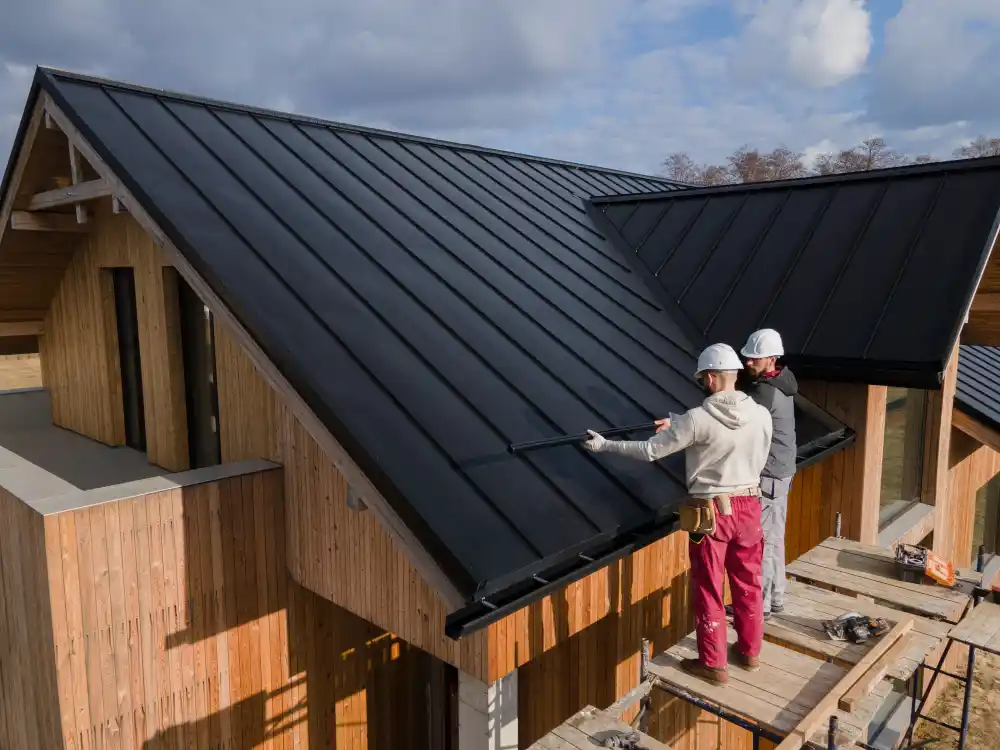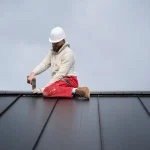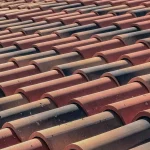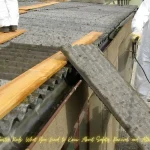Roof leaks, shingle damage or early material deterioration this is how severe weather events damage your roof’s integrity.
A strong roof ensures the safety and comfort of your home. Made of sturdy or durable materials, it can withstand multiple adverse conditions, but prolonged exposure to bad weather can weaken its structure over time. Heavy rains can cause leaks, strong winds can blow off tiles and snow accumulation can pose dangerous weight on rafters. These issues can lead to costly repairs and serious safety hazards if not addressed timely.
5 Ways Severe Weather Causes Serious Damage to Your Roof
Your roof is like the shield for your home against various environmental elements. In the UK, you will face varied regional climatic challenges that could be rough on your roofing material. Recognising the effects of bad weather helps you take preventive measures and avoid expensive repairs.
Damage From Heavy Rain | Leaks, Mold and More
When the rain comes down hard, your roof works overtime to keep your home dry. It causes water pooling, especially on flat or low-sloped roofs, which can lead to structural failure over time. If the water stands for a long time, it seeps into small cracks and crevices in your roof.
- Roof Leaks—Exposure to heavy rain weakens the roof’s supporting materials like joints or flashing. These areas then give water a way to penetrate inside the structure and cause leakage.
- Mold Growth—Moisture trapped in roofing materials creates an ideal environment for fungal development. This not only damages the roofing’s functionality but also poses serious health hazards.
- Increase Weight Load—If drainage systems fail to function properly, water will stand for longer and stress the structure. This excess weight could lead to sagging or even collapse in extreme cases.
The Impact of Strong Winds | Rip-Off Shingles
High winds for over 1-5 hours can wreak havoc by 15% on the roofing system, especially with older or poorly maintained structures. They can lift tiles or even tear them off and expose the underlying material to the elements. Stormy winds can cause various types of damage to your roof but depend on the gusts’ intensity and duration.
- Shingle Damage—If wind gusts reach 50 miles per hour or more, they create suction forces that can cause tiles to become dislodged. This uplift often starts at the edges and corners. Once shingles are lifted, gaps form and allow water to penetrate.
- Detached Flashing—Winds cause breaks in the joint sealing and create gaps that invite water in during rain. This flashing detachment around vulnerable areas (chimneys and vents) poses multiple roofing problems that need to be addressed promptly.
- Debris Accumulation—Winds bring leaves, twigs and dust to the roof. This falling debris can create punctures or dents in roofing materials. Also, debris blocks the roof gutters which leads to water ponding and further structural damage.
- Granule Loss—Asphalt shingles are covered with granules that provide UV protection and help with water drainage. High winds can cause these granules to wear off and reduce the lifespan of your roof. Regularly check your drainage pipes for signs of granules as a warning of gust damage.
Outcome of Temperature Fluctuations | Dry Out Your Roof
While often overlooked, extreme heat and prolonged sunlight can gradually deteriorate roofing materials. The tiles may expand on heating, and when the temperature drops, they contract. Not all roofing materials behave the same in this constant cycle of temperature fluctuations. Metal roofing can experience significant expansion and contraction, leading to loosened fasteners and warped panels.
- Cracking—Rapid or extreme temperature shifts can strain the material. As the material expands, cracks may develop, particularly in brittle materials like asphalt. Sudden changes in degrees can cause thermal shock to the materials, making them unable to withstand.
- Dehydrated Roofing Materials—A continuous cycle of expansion and contraction can cause roofing materials to lose moisture content. If the material dries out, it becomes more susceptible to breaking. Materials like EPDM or TPO can stretch and contract. Over time, this repeated stress weakens seams and leads to tears, allowing moisture to penetrate.
- Fading and Discolouration— UV rays from the sun cause chemical reactions that break down the molecular structure of roofing materials. This degradation leads to the loss of colour and vibrancy, compromising the overall aesthetic appearance.
A little proactive care goes a long way in extending your roof’s lifespan and saving you from unexpected expenses. Don’t wait for damage to become severe after a harsh weather event—Schedule a professional inspection with Norwich Roof Contractor and stay protected!
The Dangers of Ice and Snow | Stress Out the Roofing Material
In regions with harsh winters, people mostly face snow accumulation on their roofs. But how it poses a significant risk to structure varies with different roofing materials. For instance, asphalt shingles suffer cracking under the weight of ice, while metal roofs allow snow to slide off effectively but subsequently melt can create ice dams. Generally, a roof can handle an average weight of about 20 pounds per cubic foot of snow. Exceeding the limit can place immense structural stress and can lead to numerous issues.
- Sagging or Bowing— A warning sign of excessive snow load at the roof structure. It may cause permanent deformation or even collapse in severe cases.
- Ice Dam Formation—Snow melts on warmer parts of the roof, trickles down, and then refreezes at the colder eaves. This blockage prevents further melting snow from draining properly and, as a result, water trapped behind the ice dam. This causes seepage into the structure, which leads to extensive damage to walls, ceilings and insulation.
- Freeze-thaw Cycles—Water entering cracks or seams may freeze and expand during cold temperatures. This exacerbates the damage, creating larger gaps in the roofing material.
Effect of Hail Storms | Dent or Crack Your Roof
When Round and irregular lumps of ice hit the roofing structure with great velocity, they cause real damage or breakage of the material. The duration of the storm might be short-lived, but it can create severe structural damage and affect optimal performance.
- Granule Loss—Hailstones impact the asphalt shingles and can knock off protective granules. This exposes the material to UV rays and reduces the shingles’ effectiveness against degradation.
- Cracks and Punctures—The force of hail or larger stones over 1 inch in diameter can cause visible breaks in the roofing material. This opening in the tiles allows water infiltration and potential damage to the home interior.
- Dents and Dings—On metal roofs, hailstones create dents that can be easily noticed. This cosmetic damage can lead to corrosion and rusting if the protective coating is also compromised.
- Weakened Seals—High winds accompanying hailstorms can damage the flashing around vulnerable areas or break the seal of the tiles. This increases the risk of blow-off and exposes the roof to further problems.
Conclusion:
Bad weather conditions can affect your roof in countless ways. From snow weight and temperature stress to wind displacement, every harsh episode can lead to costly repairs or replacements if left untreated. Every homeowner must understand the importance of routine inspections after severe weather events and consult with professionals to ensure their roofs remain safe and secure.










